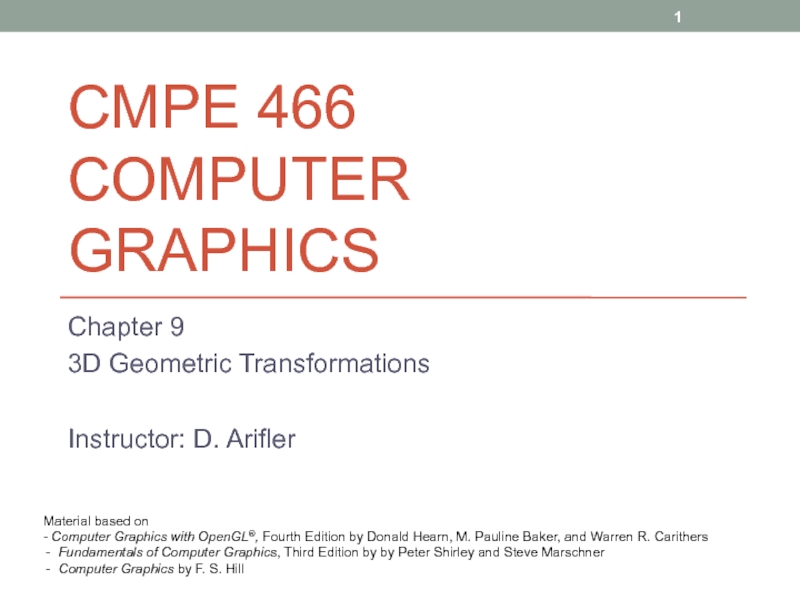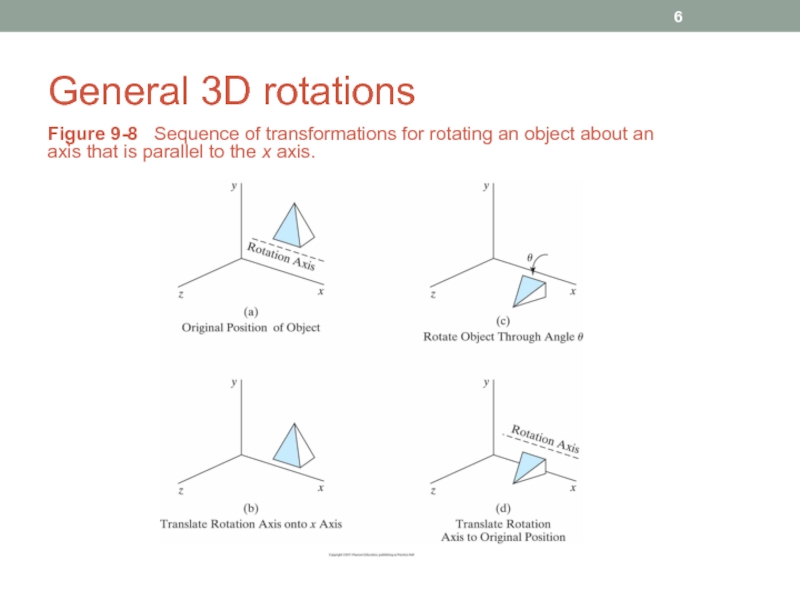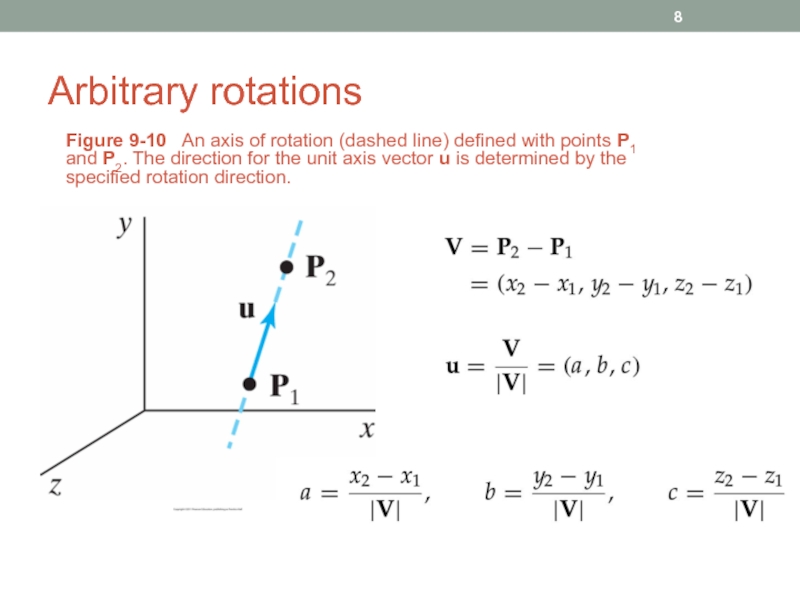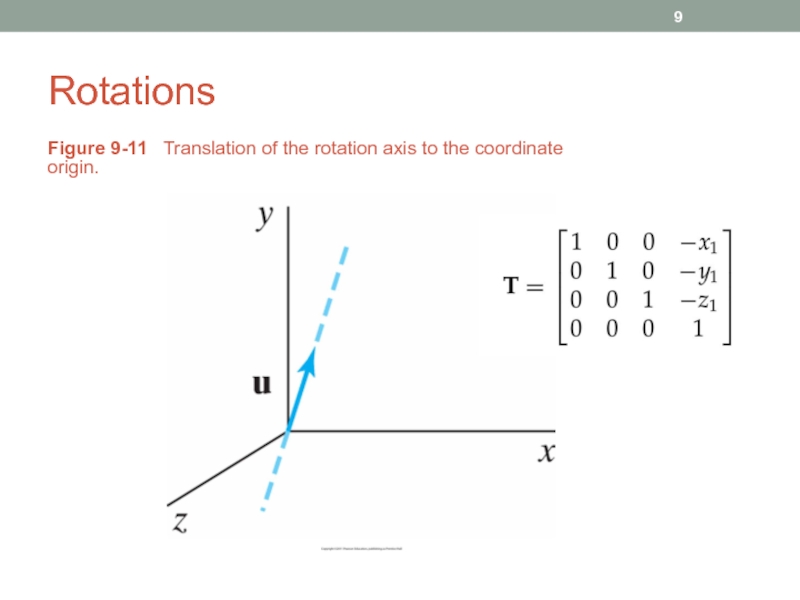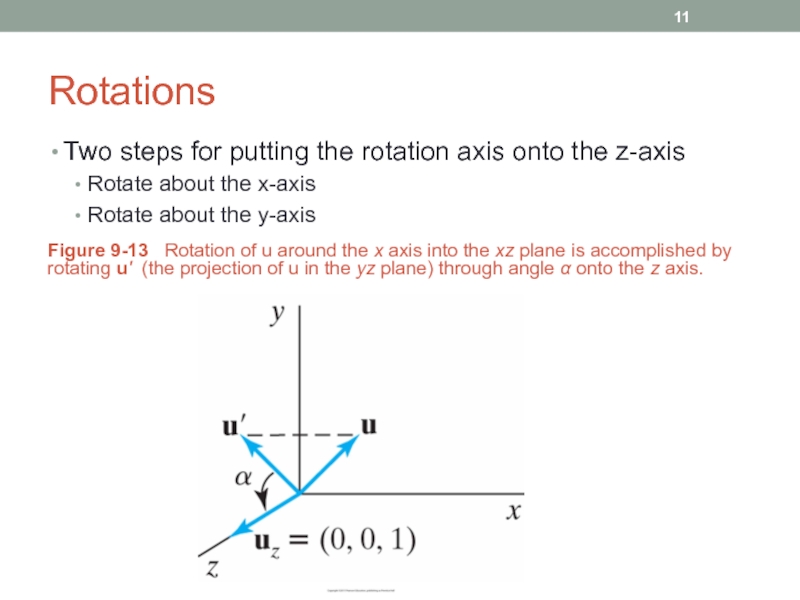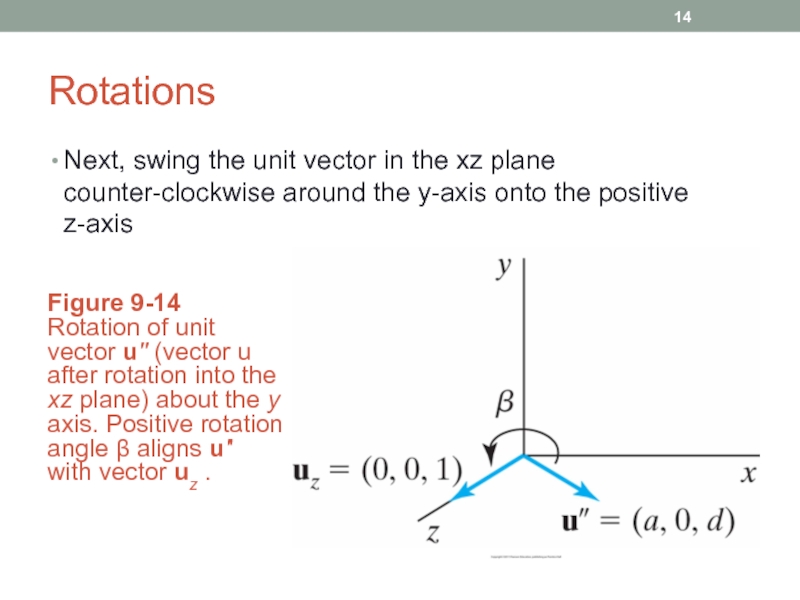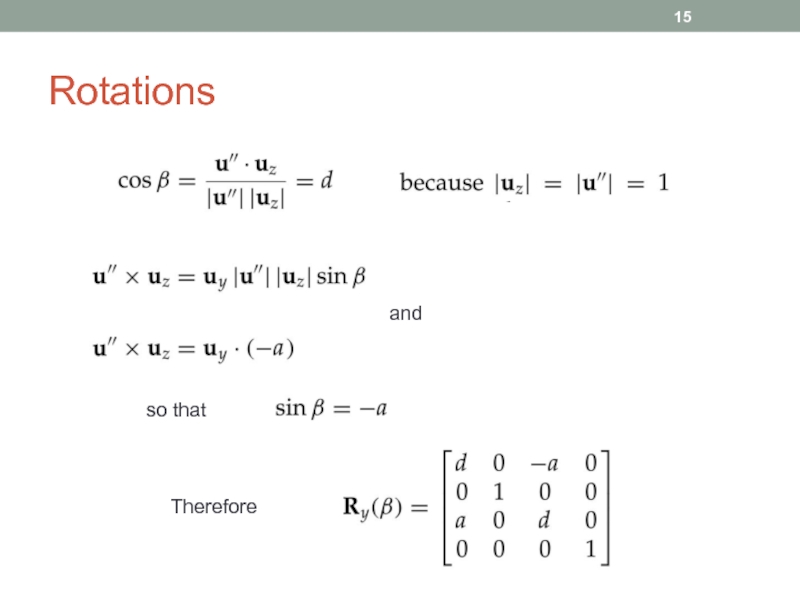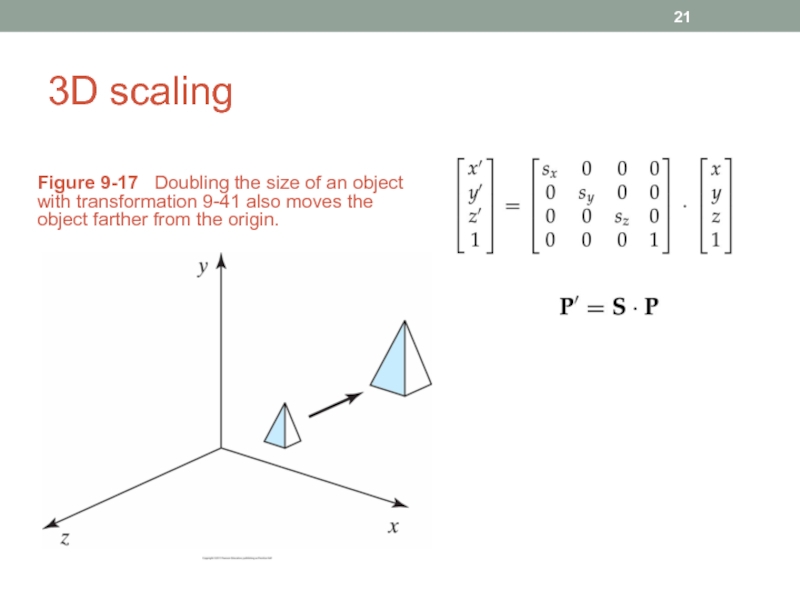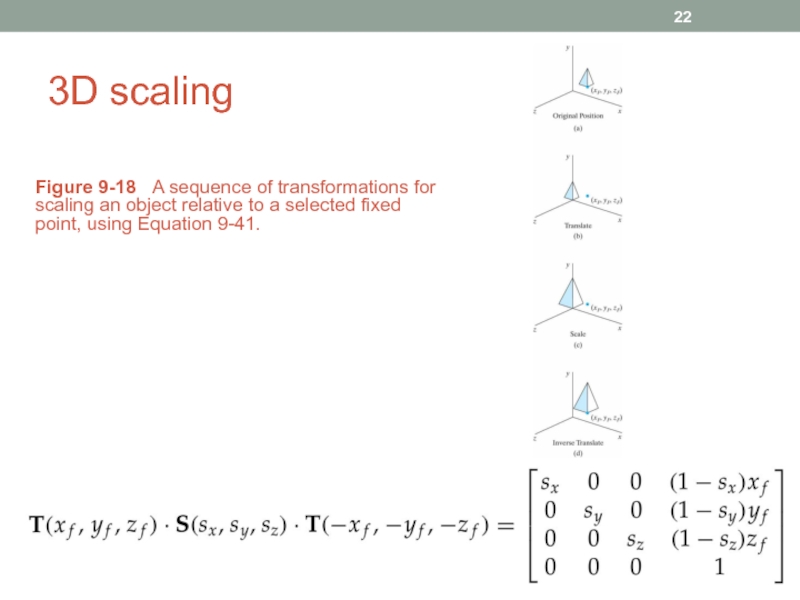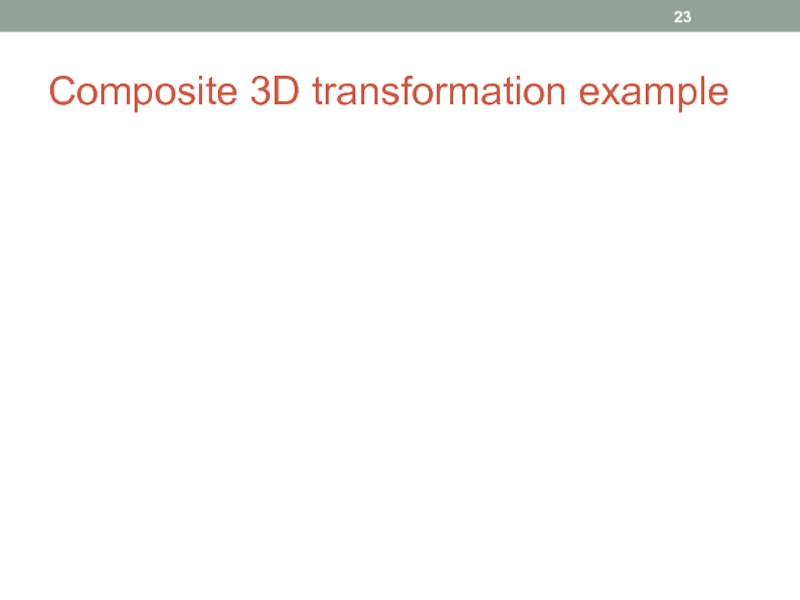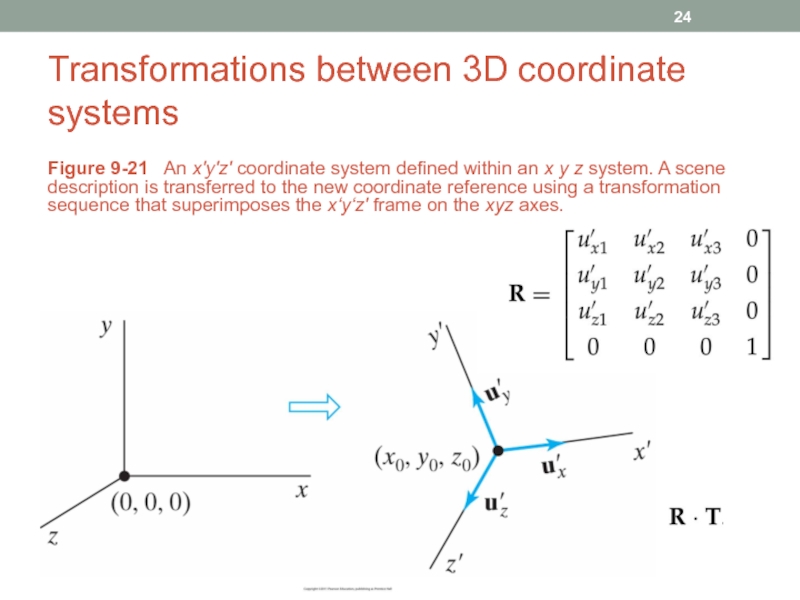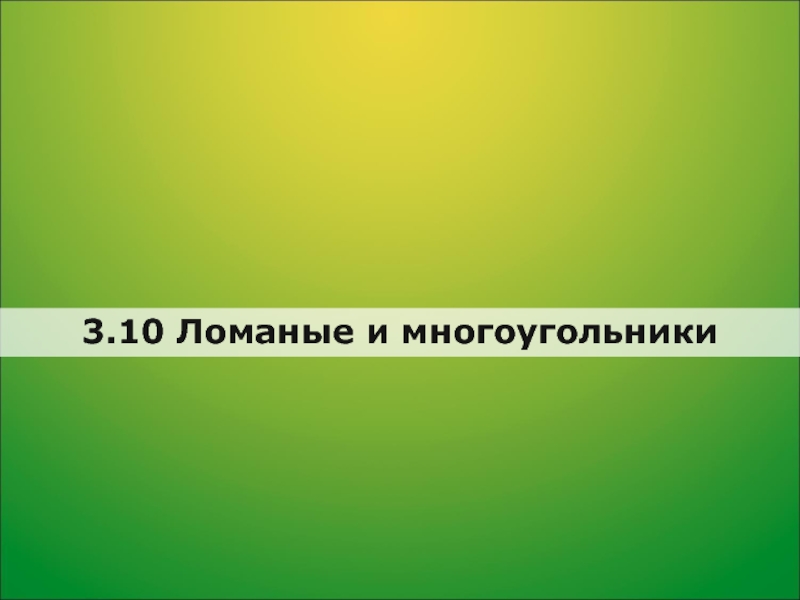- Главная
- Разное
- Дизайн
- Бизнес и предпринимательство
- Аналитика
- Образование
- Развлечения
- Красота и здоровье
- Финансы
- Государство
- Путешествия
- Спорт
- Недвижимость
- Армия
- Графика
- Культурология
- Еда и кулинария
- Лингвистика
- Английский язык
- Астрономия
- Алгебра
- Биология
- География
- Детские презентации
- Информатика
- История
- Литература
- Маркетинг
- Математика
- Медицина
- Менеджмент
- Музыка
- МХК
- Немецкий язык
- ОБЖ
- Обществознание
- Окружающий мир
- Педагогика
- Русский язык
- Технология
- Физика
- Философия
- Химия
- Шаблоны, картинки для презентаций
- Экология
- Экономика
- Юриспруденция
Cmpe 466 computer graphics. 3D geometric transformations. (Сhapter 9) презентация
Содержание
- 1. Cmpe 466 computer graphics. 3D geometric transformations. (Сhapter 9)
- 2. 3D translation Figure 9-1 Moving a
- 3. 3D rotation Figure 9-3 Positive rotations
- 4. 3D z-axis rotation Figure 9-4 Rotation of an object about the z axis.
- 5. Rotations To obtain rotations about other two
- 6. General 3D rotations Figure 9-8 Sequence
- 7. Arbitrary rotations Figure 9-9 Five transformation
- 8. Arbitrary rotations Figure 9-10 An axis
- 9. Rotations Figure 9-11 Translation of the rotation axis to the coordinate origin.
- 10. Rotations Figure 9-12 Unit vector u
- 11. Rotations Two steps for putting the rotation
- 12. Rotations Projection of u in the yz
- 13. Rotations Equating the right sides where |u’|=d Then,
- 14. Rotations Next, swing the unit vector in
- 15. Rotations and so that Therefore
- 16. Rotations Together with
- 17. In general Figure 9-15 Local coordinate
- 18. Quaternions Scalar part and vector part Think
- 19. Quaternions The rotation of the point P
- 20. Quaternions Using With u=(ux, uy,
- 21. 3D scaling Figure 9-17 Doubling the
- 22. 3D scaling Figure 9-18 A sequence
- 23. Composite 3D transformation example
- 24. Transformations between 3D coordinate systems Figure 9-21
Слайд 1CMPE 466
COMPUTER GRAPHICS
Chapter 9
3D Geometric Transformations
Instructor: D. Arifler
Material based on
- Computer
Fundamentals of Computer Graphics, Third Edition by by Peter Shirley and Steve Marschner
Computer Graphics by F. S. Hill
Слайд 23D translation
Figure 9-1 Moving a coordinate position with translation vector
Слайд 33D rotation
Figure 9-3 Positive rotations about a coordinate axis are
Слайд 5Rotations
To obtain rotations about other two axes
x ? y ? z
E.g. x-axis rotation
E.g. y-axis rotation
Слайд 6General 3D rotations
Figure 9-8 Sequence of transformations for rotating an
Слайд 7Arbitrary rotations
Figure 9-9 Five transformation steps for obtaining a composite
Слайд 8Arbitrary rotations
Figure 9-10 An axis of rotation (dashed line) defined
Слайд 10Rotations
Figure 9-12 Unit vector u is rotated about the x
Слайд 11Rotations
Two steps for putting the rotation axis onto the z-axis
Rotate about
Rotate about the y-axis
Figure 9-13 Rotation of u around the x axis into the xz plane is accomplished by rotating u' (the projection of u in the yz plane) through angle α onto the z axis.
Слайд 12Rotations
Projection of u in the yz plane
Cosine of the rotation angle
where
Similarly,
Слайд 14Rotations
Next, swing the unit vector in the xz plane counter-clockwise around
Figure 9-14 Rotation of unit vector u'' (vector u after rotation into the xz plane) about the y axis. Positive rotation angle β aligns u'' with vector uz .
Слайд 18Quaternions
Scalar part and vector part
Think of it as a higher-order complex
Rotation about any axis passing through the coordinate origin is accomplished by first setting up a unit quaternion
where u is a unit vector along the selected rotation axis and θ is the specified rotation angle
Any point P in quaternion notation is P=(0, p) where p=(x, y, z)
Слайд 19Quaternions
The rotation of the point P is carried out with quaternion
This produces P’=(0, p’) where
Many computer graphics systems use efficient hardware implementations of these vector calculations to perform rapid three-dimensional object rotations.
Noting that v=(a, b, c), we obtain the elements for the composite rotation matrix. We then have
Слайд 20Quaternions
Using
With u=(ux, uy, uz), we finally have
About an arbitrarily placed
Quaternions require less storage space than 4 × 4 matrices, and it is simpler to write quaternion procedures for transformation sequences.
This is particularly important in animations, which often require complicated motion sequences and motion interpolations between two given positions of an object.
